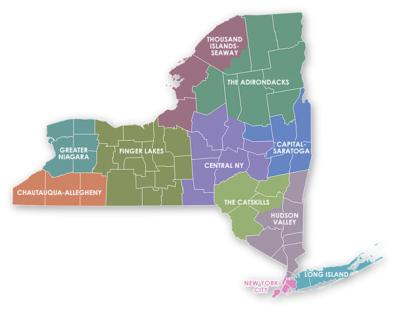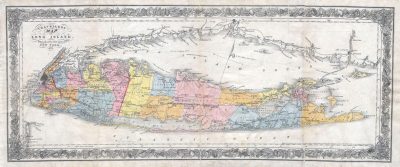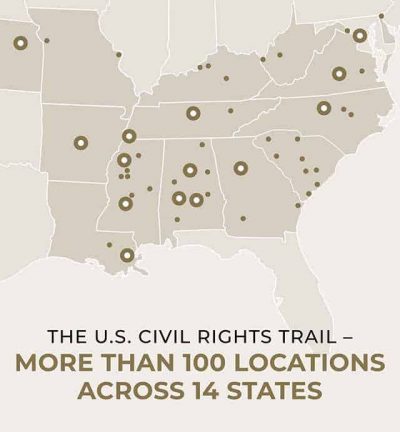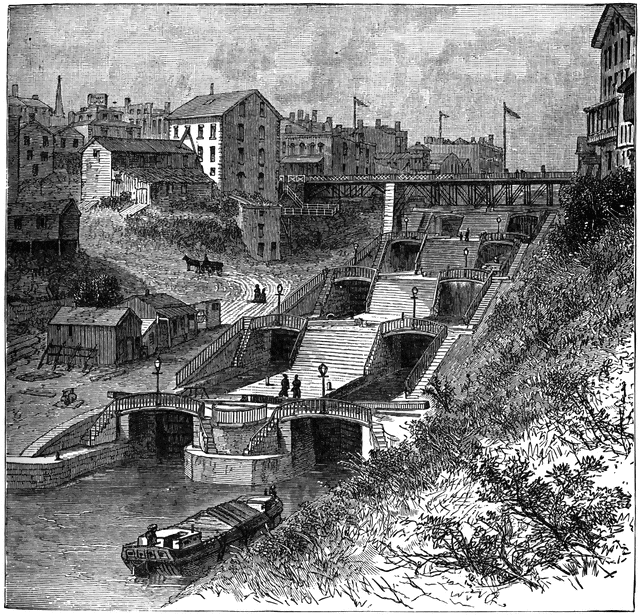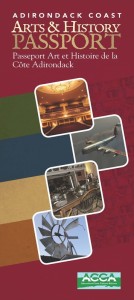
For the history community, one of the most important sources of REDC funding has been the New York State Office of Parks and Historic Preservation. The description of grants opportunities is provided here:
The Environmental Protection Fund Grants Program (EPF) provides matching grants on a competitive basis for the acquisition, planning, and development of parks, historic properties, and heritage areas located within the physical boundaries of the State of New York. Parks is for the acquisition, development and planning of parks and recreational facilities to preserve, rehabilitate or restore lands, waters or structures for park, recreation or conservation purposes and for structural assessments and/or planning for such projects. Historic Preservation is to acquire, improve, protect, preserve, rehabilitate or restore properties listed on the State or National Register of Historic Places and for structural assessments and/or planning for such projects. Heritage Areas is for projects to acquire, preserve, rehabilitate or restore lands, waters or structures identified in the approved management plans for Heritage Areas designated under section 35.03 of the Parks, Recreation and Historic Preservation Law, and for structural assessments or planning for such projects. Up to $19.5 million
As previously noted, NYSOPRHP is primarily a parks oriented organization. Awards related to parks, recreation, and playgrounds are not included in the awards listed below. The secondary status of historic sites also can be seen in the advocacy days. In Historic Preservation advocacy day last month, the “ask” was to maintain the NYSOPRHP staff dedicated to the state and federal historic register programs…but not to the preservation staff at Peebles Island. Similarly on Parks advocacy day (March 4), the emphasis is on the parks and not the historic sites.
With that being said, NYSOPRHP still is a major source of funding for the history community. The 2018 awards in this area are listed here by state region and county. Not all counties have REDC history-related awards. Whether that is because none were submitted or none of the applications were accepted cannot be determined from this list. The awards tend to be site-specific and may be to county, municipal, or private organizations. Ironically, even the Preservation League of New York received an award to help preserve its own office in Albany.
CAPITAL REGION
Albany: City of Albany
Lincoln Park Pool Design Project
The City of Albany will design, plan and permit the total replacement of the historic Lincoln Pool. The new pool will bring back to life the City’s 1930 historic resource. This pool is a recreational resource, a historic asset, and an economic driver, not only to the City, but the whole Capital Region.
OPRHP PKS P $262,500
Albany: Preservation League of New York State
Rehabilitation of 44 Central Avenue
The Preservation League of NYS will address structural deterioration, water infiltration, and areas of damaged and missing exterior brick masonry at its historic headquarters building. The work will also include making the first floor meeting space accessible to wheelchairs to allow greater public access.
OPRHP HP D $250,000
Columbia: Village of Chatham
Tracy Memorial Village Hall Roof Restoration
The Village of Chatham will restore and repair the roof and cupola of the Tracy Memorial Village Hall, an archetypal 1913 Classical Revival municipal building, on Main Street.
OPRHP HP D $200,000
CENTRAL NY REGION
Cayuga: Aurora Masonic Center
Aurora Masonic Center Preservation
The Aurora Masonic Center will complete a Historic Structure Report, a Drainage Study, Archeological Survey and develop a Preservation Plan and Architectural Design. The construction phase will preserve and restore the facade of the historic Royal Arch Chapter Hall.
OPRHP HP D $168,525
Cayuga: Cayuga Museum of History and Art
Cayuga Museum Case Laboratory Comprehensive Rehabilitation
The Cayuga Museum of History and Art will conduct structural and archaeological investigations, develop design solutions for two decades of on-site water infiltration issues, and complete construction documents to rehabilitate and mitigate deficiencies at the Case Research Laboratory. This work will address deterioration and safety concerns.
OPRHP HP P $53,700
FINGER LAKES REGION
Livingston: Village of Avon
Five Arch Bridge Restoration
The Village of Avon will complete the stabilization and restoration of the historic Five Arch Bridge in order to prevent further deterioration and allow future generations to enjoy this unique structure.
OPRHP HP D $200,000
Monroe: Village of Fairport
Fairport Bicentennial Canal Gateway Project
The Village of Fairport will create an ADA accessible formalized waterfront park which celebrates the Erie Canal’s and Village’s history and improves water access for all users. The project will enhance the existing docks, kayak launch, and boat ramp along the north bank of the Erie Canal, add comfort amenities and signage, and will improve the safety of Erie Canal Trail bicyclist along Liftbridge Lane West.
OPRHP PKS D $300,000
Ontario: City of Geneva
Parrott Hall Stabilization and Remediation
The City of Geneva, in collaboration with the Parrott Hall Coalition, will perform stabilization, urgent repairs, and remediation of historic Parrott Hall to prevent further deterioration, and to ready the property for complete rehabilitation and reuse.
OPRHP HP D $400,000
Ontario: Sonnenberg Gardens and Mansion State Historic Park
Sonnenberg Gardens Visitor Center Phase One
Sonnenberg Gardens, Inc. has secured the property at 145 Charlotte street, part of the original Thompson estate, for a new entrance and visitor center with its nonprofit offices and collection storage. New parking and maintenance facility is part of the proposed phase 1 upgrades.
OPRHP PKS D $500,000
LONG ISLAND REGION
Nassau: Old Westbury Gardens, Inc.
Westbury House Roof Restoration Phase 2
Old Westbury Gardens, Inc. will complete Phase 2 of the roof restoration at Westbury House, the only Collyweston slate roof in the United States, and the terra-cotta cornice ensuring the architectural integrity of the 1906 mansion and eliminating hazardous conditions to visitors and staff.
OPRHP HP D $500,000
Nassau: Roslyn Landmark Society
Roslyn Grist Mill Restoration
The Roslyn Landmark Society will continue the restoration of the Robeson-Williams Grist Mill (Roslyn
Grist Mill) situated in the middle of the Village of Roslyn. Once restored it will provide educational and archival opportunities for the Village of Roslyn and surrounding communities.
OPRHP HP D $500,000
Suffolk: The Caumsett Foundation, Inc.
Park Entrance Improvements
The Caumsett Foundation will improve the primary access to Caumsett State Historic Park Preserve by widening the road and making drainage improvements in order to provide safer two-way traffic as well as a new path for pedestrians and bikes.
OPRHP PKS D $500,000
MIDHUDSON REGION
Dutchess: Bard College
Montgomery Place Mansion Restoration Project
Bard College will restore the integrity and resiliency of the exterior of the Montgomery Place Mansion, a national Historic Landmark.
OPRHP HP D $300,000
Dutchess, Ulster: The Poughkeepsie- Highland Railroad Bridge Company, Inc.
Walkway Over the Hudson’s Lighting Project
The Poughkeepsie-Highland Railroad Bridge Company, Inc will plan and design sustainable, LED lighting for the Walkway Over the Hudson State Historic Park. This project will increase safety and security measures, the hours the Park is open to the public, and opportunities for nighttime programming. Design will include remote-controlled, color-changing lights, intended to be powered by alternative energy sources.
OPRHP PKS P $100,000
Ulster: Hudson River Maritime Museum
Rondout Riverport Phase 2
The Hudson River Maritime Museum will enhance the visitor experience at the Riverport by making walkway improvements, improving energy efficiencies, adding solar capacity, improving the museum facade, grounds and streetscape and integrating connections to the Kingston Greenline and Empire State Trail.
OPRHP HAS D $430,000
Ulster: Mohonk Preserve, Inc.
Lenape Lane Bridge Replacement
Mohonk Preserve will replace the 92 year-old Lenape Lane Bridge, which is a key historic carriage road connection that crosses Butterville Road in New Paltz located near the base of the Shawangunk Ridge. The bridge is also part of the broader Mohonk Preserve Foothills Project and will complement a new trailhead at the picturesque Testimonial Gateway, providing another much needed access point for the more than 200,000 people who visit the Preserve each year.
OPRHP PKS D $181,500
Westchester: Untermyer Gardens Conservancy, Inc.
Untermyer Gardens Pool Restoration Planning Project
The Untermyer Gardens Conservancy will hire a landscape architect to create design and construction documents for the rehabilitation of the historic pool at Untermyer Park and Gardens as a shallow water-filled reflecting pool. The goal is to leave the existing pool floor and walls in place while the pool is lined and infilled to a reduced depth, a concrete pad poured, and reproduction mosaic tile installed.
OPRHP HP P $50,000
Westchester: Westchester County Playland Carousel Restoration
Westchester County will reconstruct the fire damaged 1928 Carousel building at the National Historic
Landmark Playland Park in Rye. The unique octagonal building with a lamella roof houses the treasured 1915 Grand Carousel, one of only four in existence featuring hand-carved horses and chariots by famed carousel maker Charles Carmel.
OPRHP HP D $450,000
MOHAWK VALLEY REGION
Herkimer: Friends of Historic Herkimer County
Historic Herkimer Jail Preservation Tourism Development Project
Friends of Historic Herkimer County will restore and preserve the deteriorated limestone walls of the original 1834 Herkimer County Jail in Downtown Herkimer. The Project will enable the Friends to open currently closed parts of the Jail for tours and interpretation of the colorful people who spent time “in jail” between the 1830s and 1970s, bringing more tourists and residents to the historic Four Corners in Downtown Herkimer.
OPRHP HP D $239,500
Schoharie: Klinkhart Hall Arts Center, Inc.
Klinkhart Hall Stabilization
Klinkhart Hall Arts Center, Inc. will complete renovations of the Klinkhart Hall building in the Village of Sharon Springs to allow for the reuse of the vacant building which once served the community. The renovation of this historical icon will stimulate the expansion of a growing artistic community and attract tourism to the region. The structure will serve as a gallery, theatre and community center allowing for the expansion of the existing public arts programs.
OPRHP HP D $500,000
NEW YORK REGION
New York: Fourth Universalist Society in the City of New York Roof Replacement
The Fourth Universalist Society in the City of New York will restore its landmark 1898 building by reintroducing slate roofs, rehabilitating flat roofs and drainage systems, conserving masonry wall and roof elements, and reconstructing its tower floor. This project will revitalize architect William Appleton Potter’s masterpiece of Perpendicular Gothic design, thus securing its place as a community anchor on Manhattan’s Upper West Side.
OPRHP HP D $500,000
New York: Protestant Episcopal Church of Saint Peter in the City of New York
St. Peter’s Rectory Restoration
The Protestant Episcopal Church of Saint Peter will replace the roof and restore the exterior masonry facades, chimneys and windows of its Rectory, constructed as the original church building built in 1831 on land donated by Clement Clark Moore, the celebrated author of “Twas the Night Before Christmas”. The building will continue in use as a community center providing neighborhood services.
OPRHP HP D $500,000
NORTH COUNTRY REGION
Franklin: Historic Saranac Lake
Trudeau Building Rehabilitation
Historic Saranac Lake will acquire and restore the former home and medical office of Dr. E. L. Trudeau at 118 Main Street, adjacent to the existing Saranac Laboratory Museum. The historic Trudeau Building will open as a museum, allowing the public to experience this important historic space. This project will establish a museum campus next to the Hotel Saranac that will drive arts and culture tourism to the North Country region.
OPRHP HP D $500,000
Jefferson: Jefferson County Historical Society
Paddock Mansion Roof Replacement
The Jefferson County Historical Society will replace the roof on the Paddock to restore the look of the building when it was completed in 1878. OPRHP HP D $500,000
SOUTHERN TIER REGION
Broome: City of Binghamton
Stone Opera House and Strand Theater Historic Structure Reports
Historic Structure Reports will be prepared for the Strand Theater and Stone Opera House, architectural icons in Binghamton’s historic commercial Downtown core, to help ensure their survival and revitalization, paving the way for reinvestment and generation of economic activity Downtown.
OPRHP HP P $75,000
Broome: Union Presbyterian Church – Riverside Cemetery
Riverside Cemetery Historic Restoration
The Riverside Cemetery, located in Endicott, will restore its historical monuments including monument and foundation restoration of Revolutionary & Civil War era graves, foundation repair of headstones, and repair, repainting and installation of solar lighting at the Veteran’s area flagpole.
OPRHP HP P $52,750
Chemung: American Battlefield Trust
Coldiron Tract at the Newtown Battlefield
American Battlefield Trust will to preserve the 68-acre Coldiron Tract on the Newtown Battlefield, located adjacent to the Newtown Battlefield State Park.
OPRHP HP A $100,000
Tioga: Village of Newark Valley
Municipal Building Window Restoration
The Village of Newark Valley will restore all windows in the Municipal Building. The windows will be removed, restored and reinstalled in fully operable condition.
OPRHP HAS D $100,000
Tompkins: Historic Ithaca, Inc.
Cascadilla Boathouse Restoration
Historic Ithaca, in partnership with the City of Ithaca, will restore the exterior of the Cascadilla Boathouse , a c. 1896 building in Stewart Park, Ithaca, New York to prevent further deterioration. The National Registerlisted boathouse, originally built for that purpose, is still in use today. This project will make the building weathertight and attractive, and restore its Shingle-Style architectural elements.
OPRHP HP D $367,172
WESTERN REGION
Chautauqua: St. Luke’s Episcopal Church
St. Luke’s Episcopal Church Bell Tower and Front Porch Stabilization
St. Luke’s Church of Jamestown will complete a stabilization and restoration of two focal elements of its 1894 building, the 95 foot bell tower (containing a full octave carillon) and the gabbled front porch and staircase on Main Street. The completed restoration will preserve a cultural institution open to the community, with a fully water and weatherproof building that removes the potential life safety hazards of key features at the façade of the building.
OPRHP HP D $500,000
Erie: Buffalo Niagara Freedom Station Coalition, Inc.
Michigan Street Baptist Church Stabilization
The Buffalo Niagara Freedom Station Coalition will address urgent structural deficiencies and crucial systems upgrades of the Historic Michigan Street Baptist Church.
OPRHP HAS D $375,000
Erie: Springville Center for the Arts, Inc.
First Baptist Church Parsonage Acquisition
Springville Center for the Arts will acquire the historic Baptist Parsonage to create permanent artist housing in downtown Springville, reunite all of the properties in the First Baptist Church National Register Listing, and prepare for the restoration of the building.
OPRHP HP A $45,978
Erie: Town of Eden
Bley Street Mill Park Study
The Town of Eden will develop a feasibility study for the preservation and adaptive reuse of Croop’s
Mill on Bley Street along Eighteen Mile Creek. The study aims to identify necessary measures to stabilize the structures, capitalize on its heritage, develop means for access to the Creek, expand economic opportunities through recreation and tourism, and provide an educational connection to agriculture.
OPRHP PKS P $20,000
Niagara: Carousel Society of the Niagara Frontier
Allan Herschell Complex Storage Building
The Carousel Society of the Niagara Frontier will construct a new building on the site of the 1920’s
Storage Building in order to exhibit band organ artifacts. Foundation repairs will also be made to the Children’s Gallery.
OPRHP HAS D $89,743


